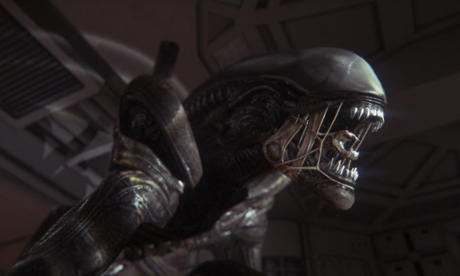
The artist HR Giger, who has died after a fall in his Zurich home, only worked directly on two computer games – the horror adventure Dark Seed and its sequel – but his influence over the medium cannot be overstated.
There are, of course, the many tie-ins with the Alien movies, for which he provided one of the most provocative monster designs in the history of cinema. Titles like Argus Press Software's 1984 strategy game, Alien, and Electric Dreams' 1986 shooter, Aliens, revelled in the opportunity to terrify players with Giger's hyper-sexualised creation, playing on the fear and tension inherent in the movies to dramatic interactive effect.
In turn, the Alien movies would go on to inspire a whole generation of game designers and artists. The first-person shooter Doom mixed demonic monsters with claustrophobic sci-fi environments, and Giger's weird organic interior designs doubtless inspired the game's miles of intestinal corridors and womb-like interiors. The influence was surely there too in Valve's atmospheric Half-Life adventures, with their repulsively transmogrified humanoid creatures, and face hugger-like Head Crabs.
Post-human horror
But Giger's influence extended beyond the Alien franchise. His surreal biomechanical art, which explored the fusion of human, machine, sex and environment, provided the games industry with a new palette of Freudian horror.
Capcom's Resident Evil series must surely have looked to Giger for its mutated human enemies, often loaded with strange sexual imagery. The lickers, the ooze, the Medusa-like Uroboros and the invasive Duvalia all played on the themes of bodily transgression and oral sexuality that Giger explored.
Giger's mecha-organic approach was enthusiastically appropriated within the 2D shoot-em-up genre. Irem's horizontal scrollers R-Type and X-Multiply feature weird pulsating landscapes – part geography, part living beings – as well as giant swollen-headed aliens with phallic extrusions. There is similar imagery in Konami's Gradius series, as well as modern indie titles Hellbound and Galshell from Akira Hut Original, which max out on the sexual undertones.
Giger directly designed art for the Dark Seed series of psychological horror point-and-click adventures. Arriving on PC and Amiga in 1992, the original title is set in a mansion somehow connected to a parallel universe rendered in typical Giger-esque style: hive-like environments, psychosexual horror and visual references to the Kleinian Archaic Mother concept. The two titles received mixed reviews at the time, though they are notable in their use of high-resolution visuals (which the artist insisted on) and the bizarre appearance of the lead designer in the lead protagonist role.
Fantasy, horror and sex
Importantly, Giger provided a connection for video game artists between the fantastical horror of HP Lovecraft and the science fiction visions of authors such as Arthur C Clarke and Robert Heinlein, and illustrators Chris Foss and Ralph McQuarrie. His art visualised the human-machine interfacing of cyberpunk, and it saw the crossover as one of sexual rather than intellectual-technological coupling. He gave game designers permission to play with erotic, even perverse, imagery within the sometimes staid, antiseptic confines of popular science fiction. Through Alien, he sent designers and gamers scuttling to the library to look up Kleinian and Lacanian preoedipal mothers and Barbara Creed's monstrous feminine. He said machines were sexy, but not in the way that car manufacturers wanted us to think; and he said monsters were really about sex. He wasn't the only one, of course, but he showed it in a way that a very visual, very kinetic artform could appreciate and understand, and he said it through two of the greatest most influential science fiction films ever.
His weird vision changed a lot of things in popular culture; games are a key example. Right now, the UK developer Creative Assembly is putting the finishing touches to its horror game, Alien: Isolation, a title that promises a rediscovery of the fraught tension and stylistic vision of the original movie. The xenomorph is only seen in terrifying glimpses, accentuating its initial power to shock and seduce.
As long as there are game designers, there will be well-thumbed copies of Giger's Necronomicon book, and dark ideas for monsters that don't really come from outer space but from ourselves.
• Shock and gore: why video games are failing at horror

